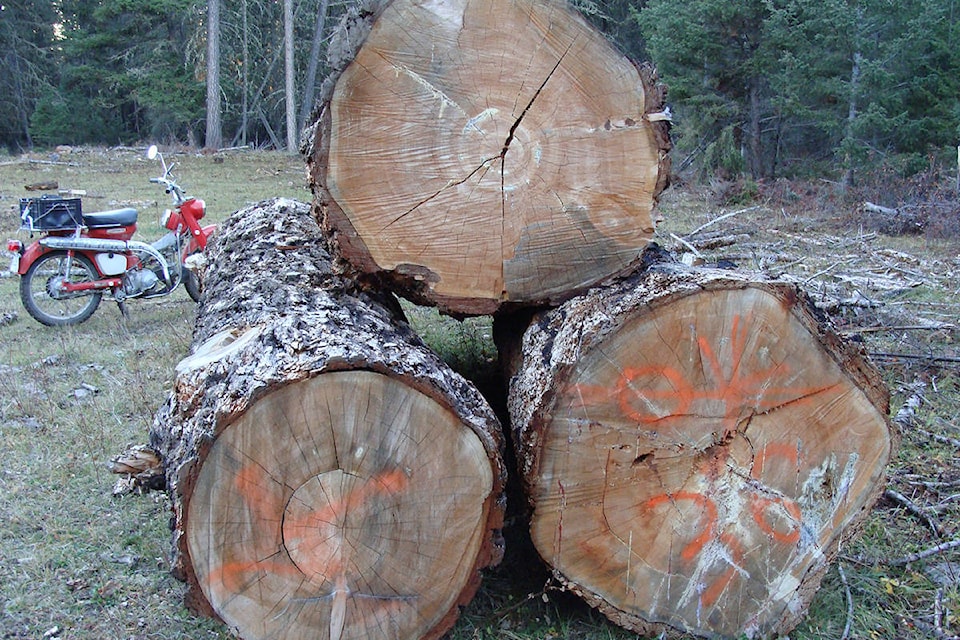The movement of wood products throughout B.C. and beyond has been changing over the decades and will likely continue to do so, with industries attempting to get the many products to the right manufacturing centre and most profitable markets.
For its part, the government tried to guide industry through legislation and regulations. One such rule in the early stages of establishing Timber Supply Areas (TSA) was the “appurtenance” clauses in timber licences that required timber to be processed – sawed or pulped – within the TSA. Over time, industry was able to convince government that it was better for many old and new forest opportunities to allow the flow of wood products to the place that makes the most economic sense.
All TSAs demonstrate the open movement phenomena, but I will use the 100 Mile TSA as an example because of a number of events that took place there recently. This TSA has many positive attributes including its relatively small size and the central location of the town of 100 Mile House, which is the main delivery centre.
Access to rail transport, a major paved highway and industrial hydro electric power also helps. All these factors allow for the efficient transport of logs, lumber and wood panel products as well as the residual products in and out of the TSA. Some logs are sent to the lumber mills and the plywood plant in Williams Lake, while shavings from the lumber mill in 100 Mile are sent to the pellet plant in Williams Lake.
Wood chips are transported to the pulp mills in Quesnel, whereas most of the hog fuel (bark) from local mills is used for local energy needs. Some logs also move into the 100 Mile TSA (mostly from the north) including aspen logs and small diameter softwood logs destined for the Oriented Strand Board (OSB) plant. This plant which processes wood panels from chips rather than from veneer for plywood utilizes a variety of species and small logs that would normally have been burned in the bush following logging.
Unfortunately, there is still considerable residual material left at the landings following logging in the form of tops, reject logs and branches. The good news is that a recent study of road side logging residue showed that the 100 Mile TSA had the best chance of using this material in some form of biomass facility owing to its relatively small size and central location of industry.
Probably one of the best examples of the importance of sorting logs on the landings is the need to get logs that are best suited for telephone poles and logs for timber framers and log house builders. These high-quality logs usually make up a small portion of the log profile and therefore demand the highest price, so it is important to get the logs to industries that are willing to pay for quality. Licensees appreciate the importance of sorting logs for the most appropriate market. The movement of wood products has become so specialized that log brokers are used by many licensees to ensure that both the supplier and recipient gain from the exchange.
While I agree with the free movement concept in most cases I don’t accept the export of raw logs out of the province for maximizing profits of logging companies.
Jim Hilton is a professional agrologist and forester who has lived and worked in the Cariboo-Chilcotin for the past 40 years. Now retired, Hilton still volunteers his skills with local community forests organizations.
READ MORE: Using waste forest products to reduce carbon emissions
